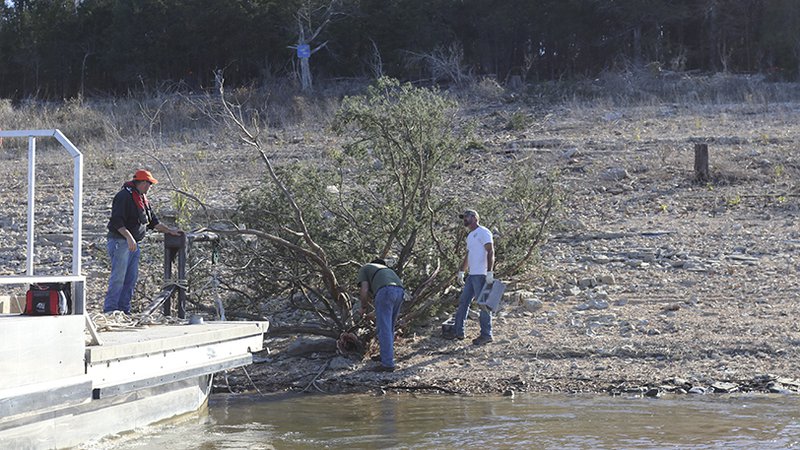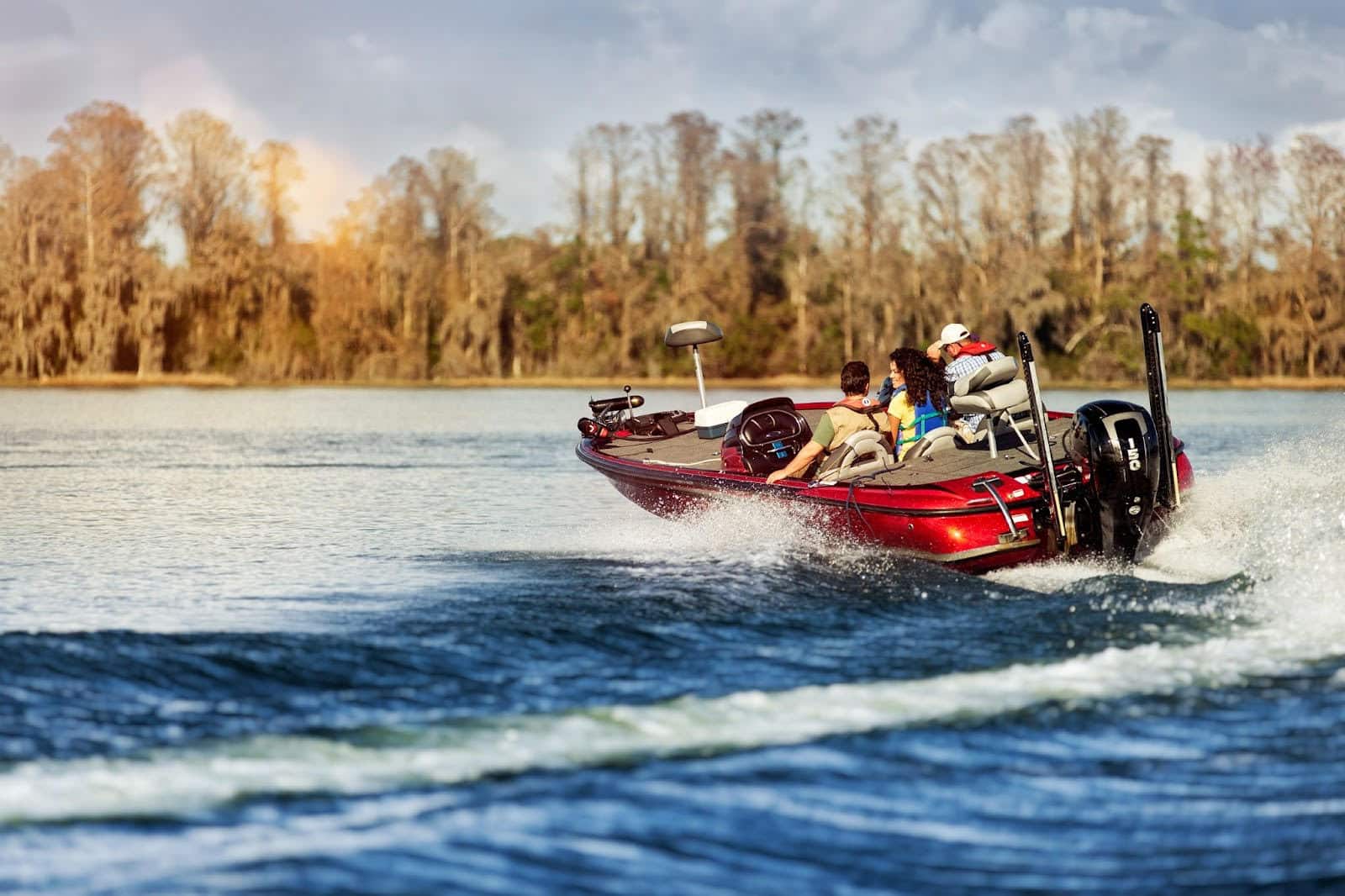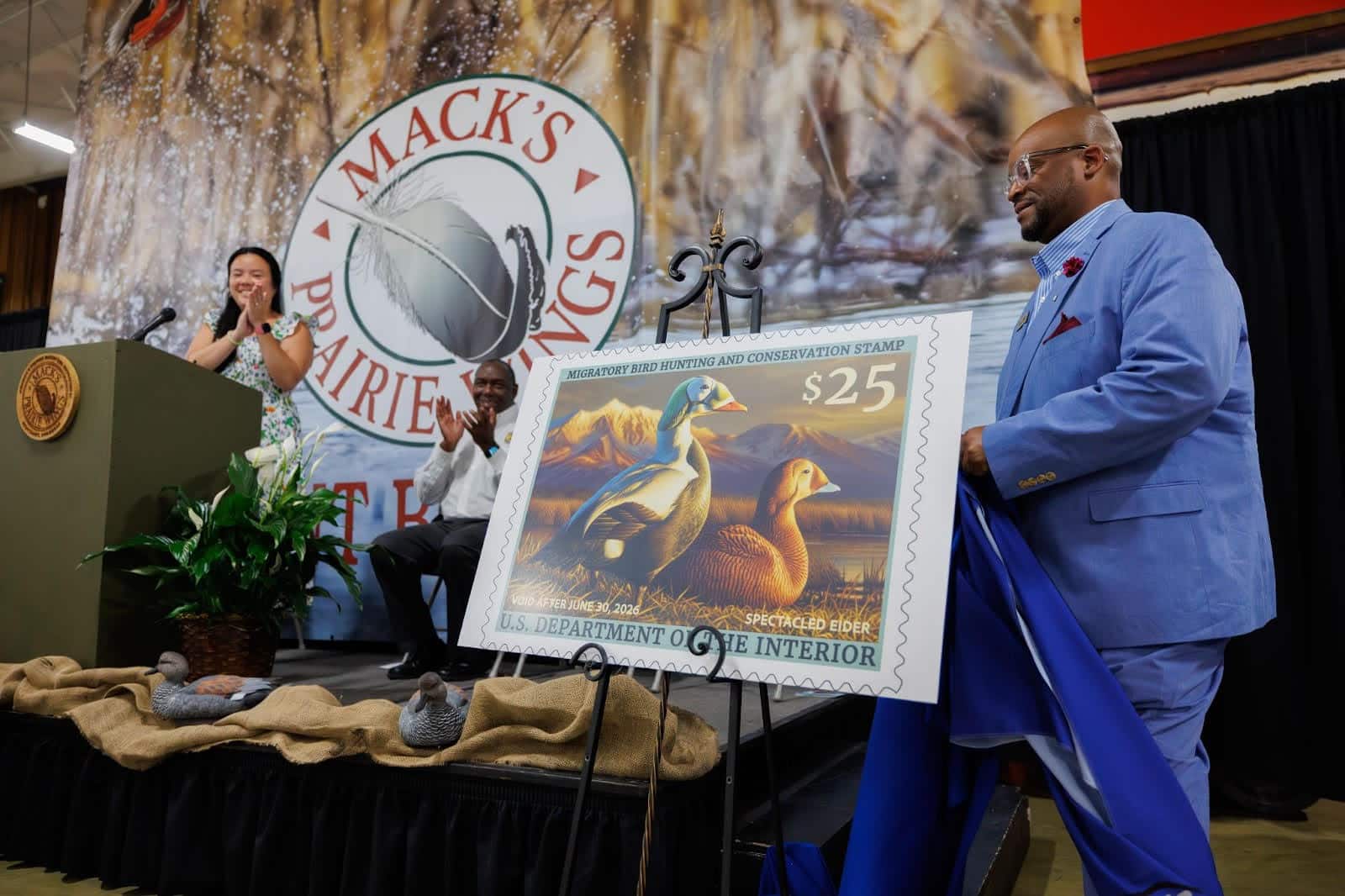Bull Shoals benefits from major habitat enhancement project
ON 12-06-2017

Dec. 6, 2017
Randy Zellers
Assistant Chief of Communications
As cold fronts finally begin to push the mercury down in Arkansas, many fair-weather fishermen have called it quits for the season, but that doesn’t mean the work stops for the Arkansas Game and Fish Commission. Fisheries biologists and technicians from across the state have been diligently working for the last week to enhance fishing opportunities on Bull Shoals Lake in northwest Arkansas, even though many anglers won’t see the impact of these efforts until the weather warms.
More than 35 fisheries staff members, over one-third of the entire division, have worked shifts cutting trees from the shoreline and sinking them in predetermined locations to create fish attractors for anglers to key on when the fish move offshore.
“As part of the Fisheries Division’s strategic management plan, we do two major habitat projects like this and at least eight smaller ones per year,” said Jeremy Risley, AGFC regional fisheries biologist in Mountain Home. “This one was supposed to have happened in May and June, but due to high water at that time, we transferred that effort to Lake Chicot.”
The AGFC used PVC structures at Chicot because the majority of shoreline is privately owned. At Bull Shoals, however, biologists were able to cut and gather trees to create natural fish attractors through a special agreement with the U.S. Army Corps of Engineers.
“If we can find a few good oaks, they’ll last a long time,” Risley said. “But cedars offer a little denser, more complex cover to the brush pile and can last up to 10 years or so. We’re looking for 8- to 12-inch diameter cedars, so they’ll last much longer than Christmas trees that are good for about a year or so.”
Risley says the primary benefit of the brush pile attractors is for anglers. The brush piles offer baitfish places to hide and predatory fish, such as bass and crappie, places to ambush the baitfish. While brush along the bank may offer some nursery cover, studies have not shown a substantial increase in the survival of young-of-the-year fish in lakes this large. Instead, naturally occurring cycles of high and low water have much more impact in spawning success and survival of young bass, crappie and bream.
“Spawning success during high-water years really drives the system,” Risley said. “Through our population samples, we can see nearly 10 times the productivity as average years.”
Most of the brush piles have been placed in locations that will be 20 to 30 feet deep when the lake is at full pool.
“The attractors will help concentrate bass, crappie, walleye, catfish, and most any other fish other than open water species like striped bass,” Risley said. “People will be able to get the GPS coordinates for these attractors when the fish move off the banks and hopefully find them out there.”
This isn’t the first time Bull Shoals has seen a major effort to create fish attractors from shoreline brush. In fact, the areas where these trees are being placed may have some remnants from earlier work.
“A lot of habitat work has taken place here in the past,” Risley said. “Mark Oliver, who was the chief of fisheries for many years, actually did a lot of habitat work here when he was a regional biologist.”
Risley says fish attractors and deep-water habitat have been added to Bull Shoals since at least 1988. Since then, the AGFC and its partners have placed more than 500 attractors in the lake. Biologists determined areas of the lake in need of maintenance and picked locations that have been popular with anglers to come up with a list of areas to enhance.
“Last week we were able to sink four to five trees at 42 sites, and we’re hoping to get 80 sites completed by the end of this week,” Risley said. “The first week focused on Howard Creek and sites near the County Road 15 Access, and this week we’re working hard on locations in and around Jimmie Creek.”
Efforts to increase fish attractors along the Arkansas-Missouri line have been bolstered by a special habitat barge donated by Bass Pro Shops in 2005. The customized 25-foot pontoon boat was designed to drag brush from the shore or load it on an open deck to be dumped at a site, and has been instrumental in many habitat enhancements over the years.
“We have three habitat barges working on the project, but this one really does a great job of pulling the brush from the shore because of the way its motor is mounted for added pulling power,” Risley said. “Our other barges work OK, but this one has really been a huge help for this project on Bull Shoals.”
Once the project is complete, the location of new fish attractors will be added and details of existing attractor locations will be updated on the AGFC’s interactive map at https://www.agfc.com/en/resources/maps.
Recent News

Watch your wake
Jul. 2, 2025
Subscribe to Our Weekly Newsletter E-mails
Don’t miss another issue. Sign up now to receive the AGFC Wildlife Weekly Newsletter in your mailbox every Wednesday afternoon (Waterfowl Reports are published weekly during waterfowl season and periodically outside the season). Fishing Reports arrive on Thursdays. Fill in the following fields and hit submit. Thanks, and welcome!

